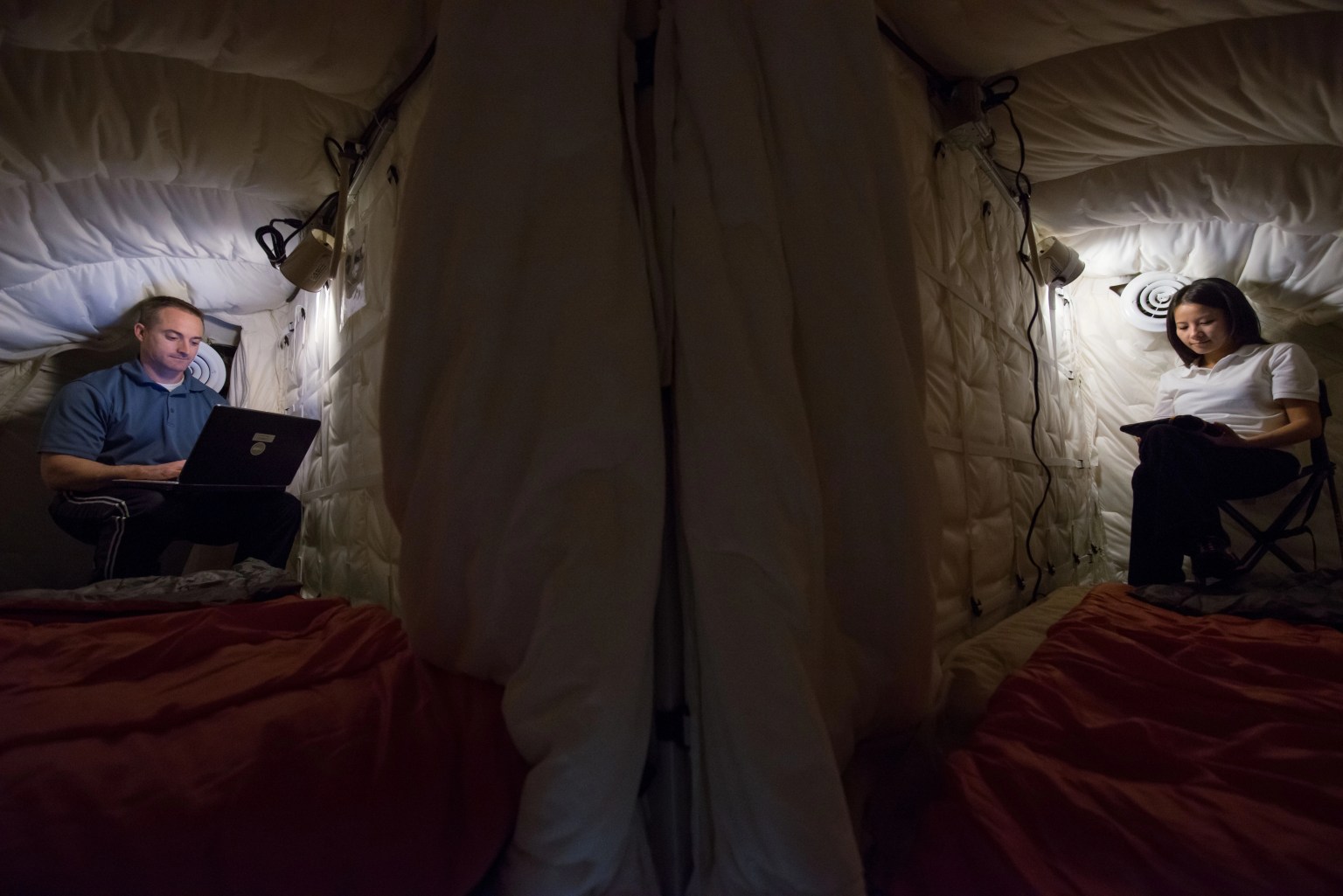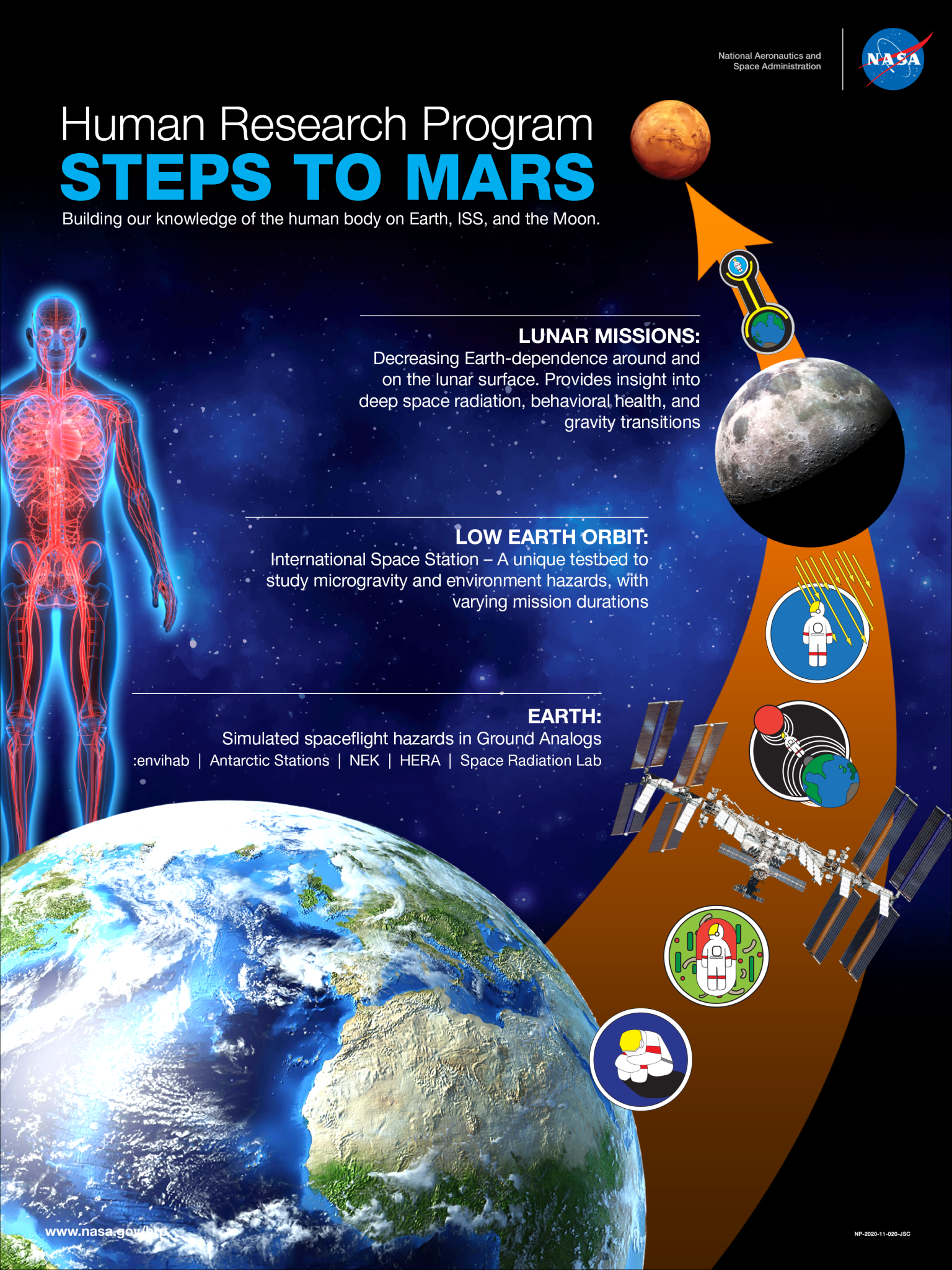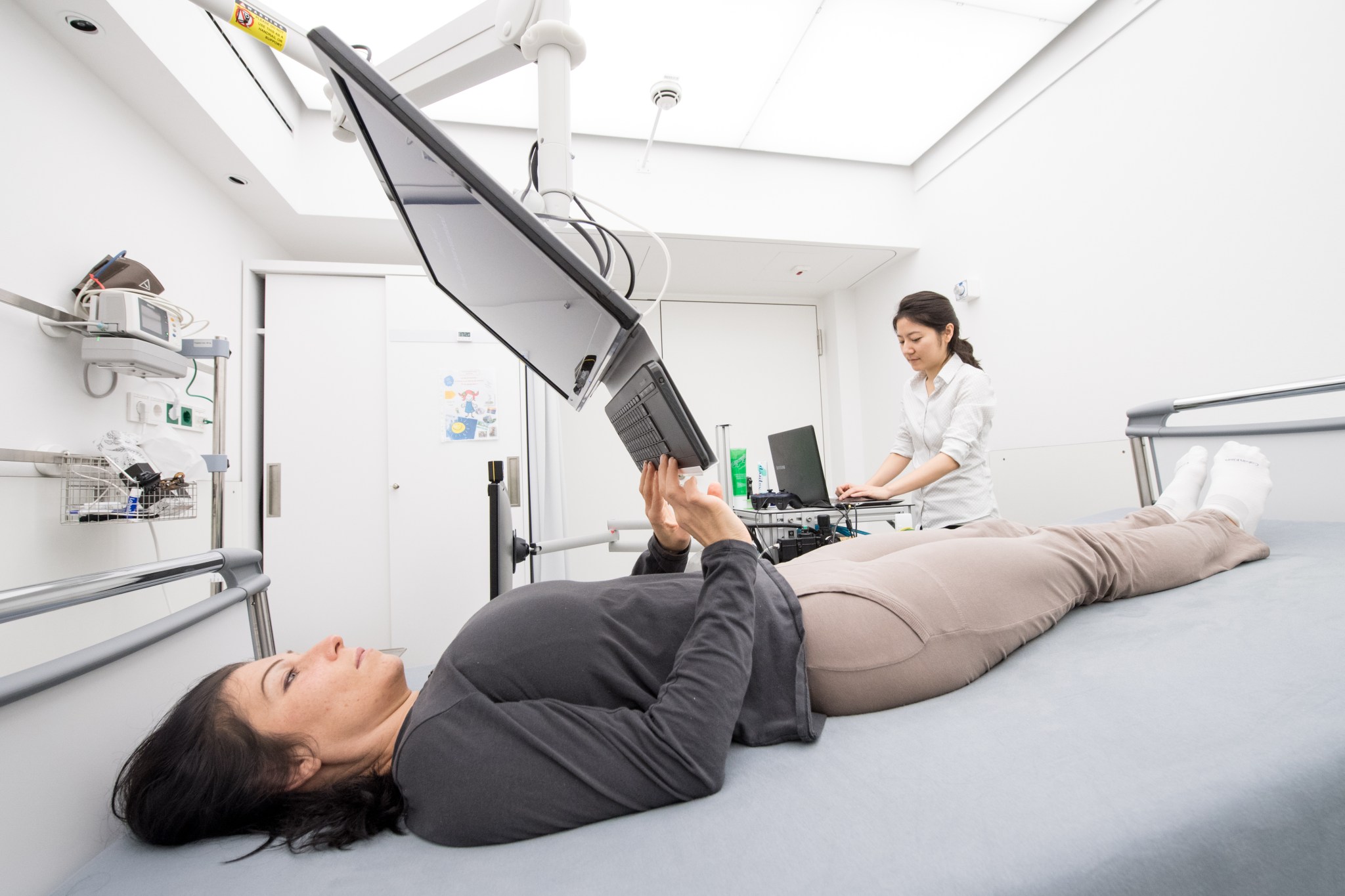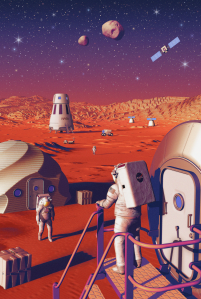This article is part of a series that details each step NASA’s Human Research Program is taking to prepare humans for long-duration missions to space. Step 1, described below, involves Earth-bound simulations of life in space. Step 2 relies on research conducted on the International Space Station to better understand and manage the effects of long-duration missions. Step 3 tackles the challenge of keeping humans healthy in the deeper space environment of the Moon. For an overview of these steps, click here.
As astronauts venture farther into the solar system to take the next giant leap to Mars, the first step to understanding how space travel affects human health and performance begins with research on Earth. NASA will take a steppingstone approach using knowledge gained on Earth and building on 20 years of research aboard the International Space Station to send explorers to the Moon, through the agency’s Artemis program, where they will gain experience for future missions to Mars.
One-way NASA researches astronaut health is by using simulated missions on Earth, called analogs, to study what happens to humans in spaceflight-like conditions that can be replicated on the ground. NASA’s Human Research Program studies how humans adapt to challenges that astronauts will encounter on missions to the Moon and Mars by using extreme environments similar to space, such as remote places on Earth like Antarctica. The research aims to find ways to keep crew members healthy in body and mind, both during and after their missions.
Together, analog studies, space station research, and lunar missions will reduce risks for Mars-bound astronauts in many ways. This includes helping develop approaches for astronauts to work efficiently and safely on another planet, perform well as a team, diagnose and treat medical issues, and manage radiation exposure and other critical factors essential to accomplishing Mars missions.
Down to Earth
Much of the research focuses on addressing the five hazards of human spaceflight – radiation, isolation and confinement, distance from Earth, microgravity, and hostile/closed environments – which can be simulated to some degree in facilities on Earth.
“The hazards are the main stressors that can change the physical and mental health of astronauts. To address these issues, we need labs where we can reproduce and control as many related factors as possible,” said Jennifer Fogarty, former chief scientist for the Human Research Program. “This is where analogs come into play.”
Ground-based analogs provide a unique way to study the effects of space exploration on humans with the benefits of research on Earth. For example, analogs offer access to a large set of volunteer participants and state-of-the-art equipment that does not need to be launched into space.
“Analogs allow us to study the effects of space exploration faster and cheaper because the research is easier to do on the ground,” said Brandon Vessey, deputy element scientist for NASA Research Operations and Integration.
The Human Research Program currently uses numerous ground-based analogs to learn how to address the hazards of human spaceflight and prepare for missions. The studies focus on testing the design of spacecraft habitats, as well as helping international crews work well together, maintain their mental health, and adjust to living in microgravity.
Some of these analogs and the hazards they study are:
:envihab (gravity, environment): Located in Cologne, Germany, this analog is largely used to study the effects of microgravity on the body. Volunteers are placed on strict bed rest in a position in which the head is tilted down at a slight angle for one to two months, to induce the effects of weightlessness on the body. The facility is also used to examine how elevated carbon dioxide exposure and artificial gravity, through centrifuge spinning, affect crews. Elevated levels of carbon dioxide may impact the health of astronauts living in a spacecraft, underscoring the need for reliable air filtration technology.
Antarctic Stations (environment, isolation): Scientists study how isolation and confinement affect cognition, as well as the teamwork and social relationships of individuals working at research stations in the extreme environment of Antarctica over the winter.
Human Exploration Research Analog (isolation, distance): Located at NASA’s Johnson Space Center in Houston, this analog is a simulated exploration habitat for studying behavioral health, crew communication, medical capabilities, and how astronauts use equipment and technologies. HERA simulations can also look at the crew’s ability to work autonomously. In a real mission to Mars, the crew members would experience communication delays due to the distance from Earth and would need to work together, with only sporadic input from Mission Control.
National Space Radiation Laboratory (radiation): NASA teamed with the U.S. Department of Energy to establish a lab at the Brookhaven National Laboratory in New York to help assess health risks associated with space radiation. The lab uses beams of ions to simulate cosmic rays and assess the effects on biological samples and equipment. This research helps to improve risk assessments for humans and develop techniques to reduce those risks as astronauts travel beyond Earth’s protective magnetosphere.
The Path Forward
The research conducted in analog environments will help ensure the women and men on future missions to the Moon and Mars will remain safe and productive. The research also is helping astronauts on the space station live and work in low-Earth orbit for months at a time, in preparation for longer and farther missions from Earth.
(Editor’s note (4/30/25): This article was updated to reflect current analog mission status.)
____
NASA’s Human Research Program, or HRP, pursues the best methods and technologies to support safe, productive human space travel. Through science conducted in laboratories, ground-based analogs, and the International Space Station, HRP scrutinizes how spaceflight affects human bodies and behaviors. Such research drives HRP’s quest to innovate ways that keep astronauts healthy and mission-ready as space travel expands to the Moon, Mars, and beyond.


































